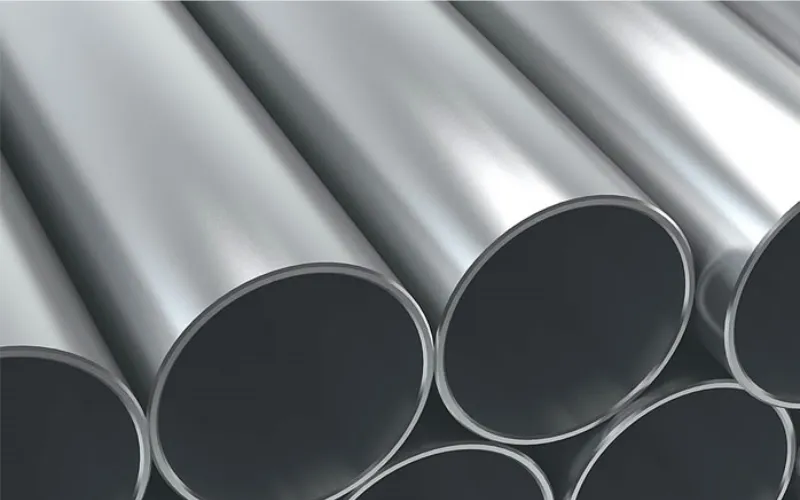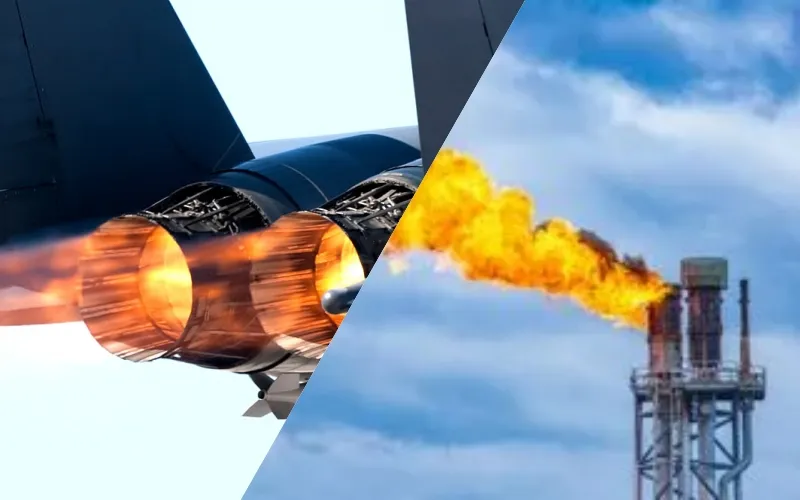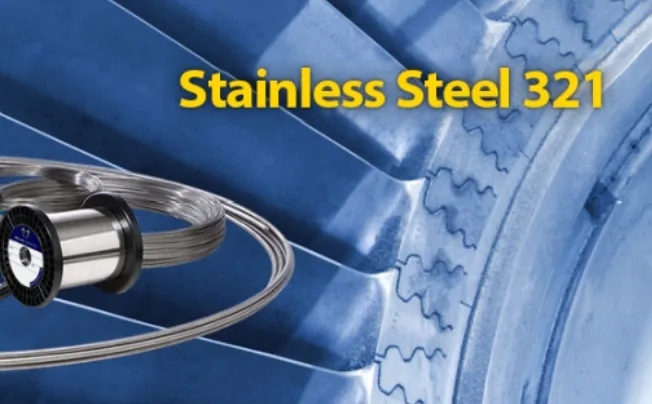What Is 321 Stainless Steel?
321 Stainless steel is a titanium-stabilized austenitic stainless steel. The 18/8 blend of chromium and nickel is tempered with titanium to give 321 protection from intergranular corrosion that can occur after heat treatment. Generally speaking, the titanium content is typically five times that of the carbon content.
321 Stainless Steel Chemical Composition
| C | Si | Mn | S | P | Cr | Ni | Ti |
| ≤0.08 | ≤1.00 | 2.00 | ≤0.030 | ≤0.035 | 17-19% | 9-12% | 5x(C+N) min – 0.70 max |
What Are the Advantages and Disadvantages of SS 321?
Advantages You can Enjoy
1. Superior Corrosion Resistance
321 stainless steel offers excellent resistance to intergranular corrosion, as well as to stress corrosion cracking and pitting.
2. High-Temperature Performance
Grade 321 can withstand temperatures up to 900°C (1652°F) for extended periods, and up to 925°C (1700°F) for short-term exposure.
3. Mechanical Properties
| Yield Strength, min. (ksi) | 30 |
| Tensile Strength, min. (ksi) | 75 |
| Elongation, min. (%) | 40 |
| Hardness, max. (Rb) | 95 |
4. Good Processing Performance
Grade 321 can be easily welded and processed by standard shop fabrication practices.
5. Physical Properties
| Density, lb/in3 | 0.286 |
| Modulus of Elasticity, psi | 28.0 x 106 |
| Coefficient of Thermal Expansion, 68-212˚F, /˚F | 9.2 x 10-6 |
| Thermal Conductivity, Btu/ft hr ˚F | 9.3 |
| Specific Heat, Btu/lb ˚F | 0.12 |
| Electrical Resistivity, Microohm-in | 28.4 |
6. Low-temperature Toughness
Due to its unique constituents, 321 also possesses good low-temperature toughness.
Disadvantages You May Take Care
1. Titanium does not transfer well across a high-temperature arc, so SS 321 is not recommended as a welding consumable.
2. Alloy 321 stainless steel does not perform well in chloride solutions, even in small concentrations, or in sulfuric acid service.
3. Alloy 321 stainless steel cannot be hardened by heat treatment, only by cold working.
4. Alloy 321 stainless steel does not polish well, so it is not recommended for decorative applications.

What Are the Applications 321 Stainless Steel?
Due to its high-temperature resistance and excellent corrosion resistance, grade 321 has been used in a wide range of applications including oil & gas, petrochemicals, automobiles, aerospace, and general industry. Below, we outline a few key applications of 321 stainless steel.
1. Aerospace: piston engine manifolds, exhaust systems, and other high-temperature components
2. Chemical Processing: for pipes, tanks, and valves in chemical handling
3. Food Processing: equipment for handling acidic and organic substances
4. Petroleum Refining: polythionic acid service, heat exchanges
5. Medical industry: medical equipment like dental tools and surgical implants
6. Automotive industry: catalytic converters and exhaust systems
7. Heat Exchangers: components that come into contact with high-temperature and corrosive fluids

Is 321 Stainless Steel Magnetic?
Grade 321 is not magnetic in the annealed condition, but can become mildly magnetic following heavy cold working.
Gnee and 321 Stainless Steel
Gnee Steel is a Chinese steel provider with a global client base. We offer a wide range of steels for use across various industries, as well as profiling and testing services for our products. One of the stainless steel grades we offer is type 321. At our factory, 321 stainless steel is available in various forms, including plate, coil, pipe, bar, etc. Also, it can be custom-cut to specific dimensions.
Contact us today to learn more about 321 Stainless Steel or to make a purchase.


